6.8 Western vs 6.5 PRC: Battle of Modern Long-Range Cartridges

Long distances shooting has increased in popularity in the last few decades, which means an increase in better equipment and rounds.
The 6.5 Creedmoor has dominated the long-range discussion for years, but we're here to talk about the two newcomers that have begun to gain a following.
The 6.8 Western vs. 6.5 PRC debate is one of the hottest topics in long-range shooting, even though these are new rounds to the market.
Keep scrolling to find out which one will suit you best.
What's the Difference Between the 6.8 Western vs. 6.5 PRC?
Judging by appearances, there's not much difference between these two rounds.
However, as we discuss the following sections, you'll begin to see what makes these calibers unique and understand what situations one shines over the other.
Cartridge Specs
Visually these two short-fat rounds look eerily similar. They have the same height variation and maximum pressure.
However, there are a few ways to tell the cartridges apart.
The case length of the 6.8 Western is 2.020". It has a rim diameter of 0.535". The shoulder angle is 35-degrees, and the cartridge's overall length is 2.755" to 2.955" with a case capacity of 74gr.
The case length of the 6.5 PRC is longer at 2.030", and the rim diameter is slightly less at 0.532". The shoulder angle is 30-degrees, and the overall cartridge length is 2.755" to 2.955" with a case capacity of 67.6gr.

If you plan to shoot these rounds during the same trip to the range, be extremely cautious on what round is going into what gun since it would be easy to place the wrong cartridge in the wrong gun.
Despite having differing case capacities, the SAAMI maximum pressure for both is 65,000 psi, which will propel the bullets at incredible speeds.
The typical bullet weights for the 6.5 PRC are 140-143-grain and have a max velocity of 3,030fps. If we increase the bullet weight to 147-153gr, the velocity slightly drops to 2,940fps.
The 6.8 Western has an estimated velocity of 3,200fps for bullets weighing 140-143gr and 3,100fps for bullets weighing 147-153-grain.
The 6.8 Western offers heavier bullets at similar speeds. A 165-grain bullet has a muzzle velocity of 2,970fps. A 170-grain bullet clocks in at 2,900fps, and a 175-grain will slow down to 2,832 fps.
Now that we know some of the specs let's see how they affect the performance of each caliber.
The Recoil of the 6.5 PRC vs. 6.8 Western
Felt recoil depends on several factors. The gun, bullet weight, powder load, and shooter all have a part to play.
The 6.5 PRC round has noticeably less recoil than the 6.8 Western cartridge.
At 30.1ft-lbs of free recoil energy, the 6.8 Western roughly has 30% more recoil than the 21.6ft-lbs of the 6.5 PRC.
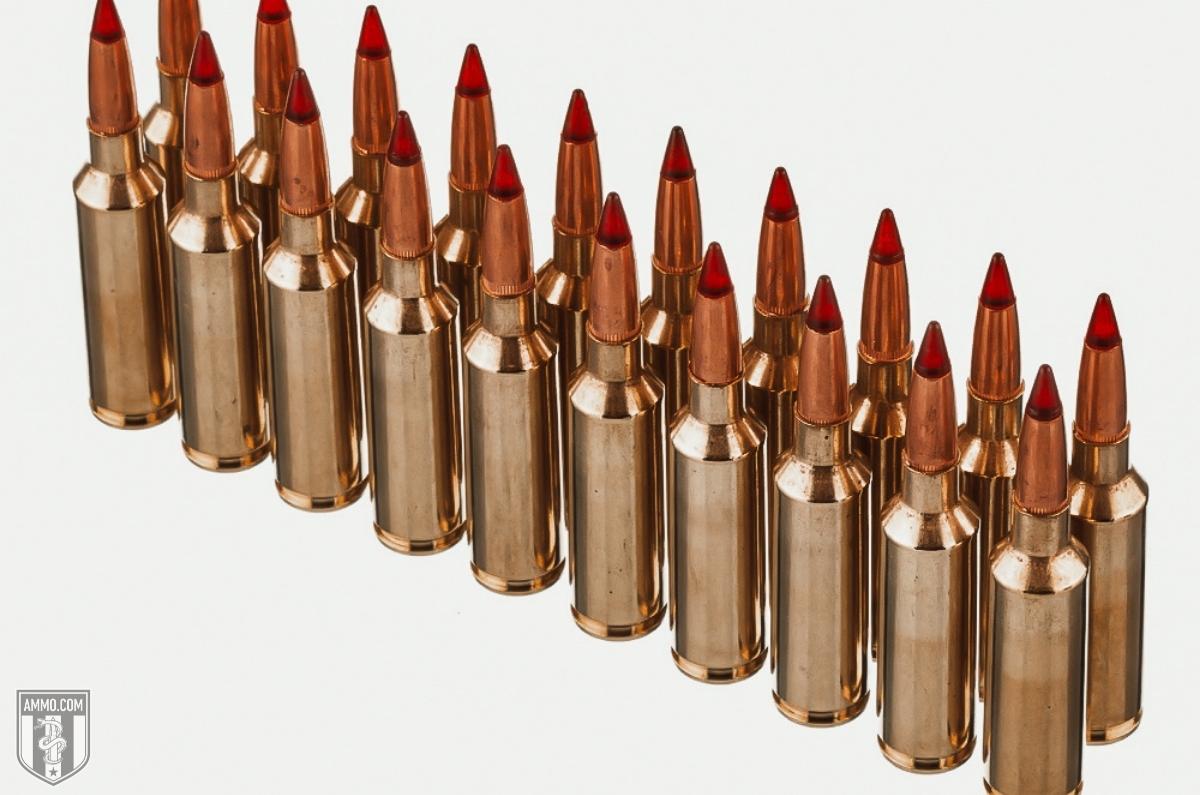
This is due to a few factors, including increased bullet weight and case capacity.
However, don't dismiss the 6.8 Western based on recoil because the 338 Lapua comes in at a whopping 40ft-lbs. When comparing the 6.8 Western vs. the 338 Lapua vs. the 30-06, the Western holds its own.
Even though these rounds look similar, the 6.5 PRC has significantly less recoil than the 6.8 Western and easily wins this section.
Trajectory of the 6.8 Western vs. the 6.5 PRC
The bullet's trajectory plays a vital role in long-distance shooting and hunting.
I've never met a shooter who doesn't prefer a flat shooting round over a bullet with more of an arch.
A flat trajectory is crucial for long distances because you won't need to compensate as much for bullet drop.
The 6.5 PRC is the round with the flattest trajectory. When zeroed at 200 yards, it drops 6.1" at 300yds, and 34.6" at 500yds.
The 6.8 Wester drops 6.3" at 300yds when zeroed for 200yds, and it drops 36" at 500yds.
To be fair, the bullet's weight and shape significantly affect the trajectory. Keep in mind that the 6.8 Western is a heavier bullet, so gravity pulls it down much quicker.
The 6.5 PRC also wins this category.

Accuracy
The accuracy of these rounds largely depends on the rifle, shooter, and quality of ammo.
Several years ago, I sighted in a rifle for my grandpa, only to have him pick it up and not be on the paper.
I loaded it and shot several groups of three touching, so he resighted it in for himself and did the same.
Another time a buddy was sighting in his new 300 Blackout. He would get two close, and then the third wouldn't be on the paper.
I tried, and the same thing happened. So he called the guy who he bought the ammo from and discovered the rounds were cheap, only designed for plinking at close ranges.
He bought some high-quality ammo, and we were quickly driving tacks.
I tell you those stories to emphasize that accuracy varies greatly between rounds of the same caliber.
Both of these rounds were designed for long-distance shooting and are very accurate.
If I have to give an edge to one caliber, it would be the 6.5 PRC because it shoots at a flatter trajectory, so it will be easier to be more accurate at farther distances.
Ballistic Coefficient

The ballistic coefficient (BC) measures how well a bullet fights air resistance and wind drift. To say it the gun nerd way, it's a numerical expression of the aerodynamics of a bullet. Most shooters prefer high BC bullets that will shed the wind easier, so it should be more accurate.
Heavy bullets will generally have a higher BC because it takes more force to change the flight of a heavier bullet than a lighter one. The ballistic coefficient varies based on bullet design, weight, and other factors that we don't have time to discuss in this article.
Depending on the ammo you purchase, you can expect the BC of the 6.8 Western caliber to be around 0.620.
Surprisingly, the BC of the lighter 6.5 PRC bullet will be around 0.625. This is slightly more, but I doubt you will notice much difference.
The winner by another narrow margin is the 6.5 PRC.
6.5 PRC Stopping Power vs. 6.8 Western Stopping Power
Many will argue that stopping power doesn't matter because a well-placed shot will do the job.
I agree; to a point.
Stopping power still matters because not every shot is well placed.

These rounds were intended for long-range shooting so that a tiny miscalculation will be the difference between a well-placed shot or a poorly placed shot.
The stopping power is primarily determined by bullet size, velocity, and jacket type.
The larger the bullet, the more force it will require to stop it, and it will leave a bigger hole.
Though, there are instances when a faster traveling smaller bullet can do more damage.
A bullet designed to expand on impact like a soft point (SP), ballistic tip, or jacketed hollow point (JHP) will have less penetration than a full metal jacket (FMJ), but depth of penetration doesn't always result in stopping power.
When it comes to these two rounds, the edge goes to the 6.8 Western. It fires larger bullets of various jackets at equivalent velocities.
However, both rounds can ethically harvest big game, which we will discuss next.
Hunting
Both calibers are excellent calibers for hunting. The 6.8 Western was primarily designed with mule deer hunting and elk hunting in mind.
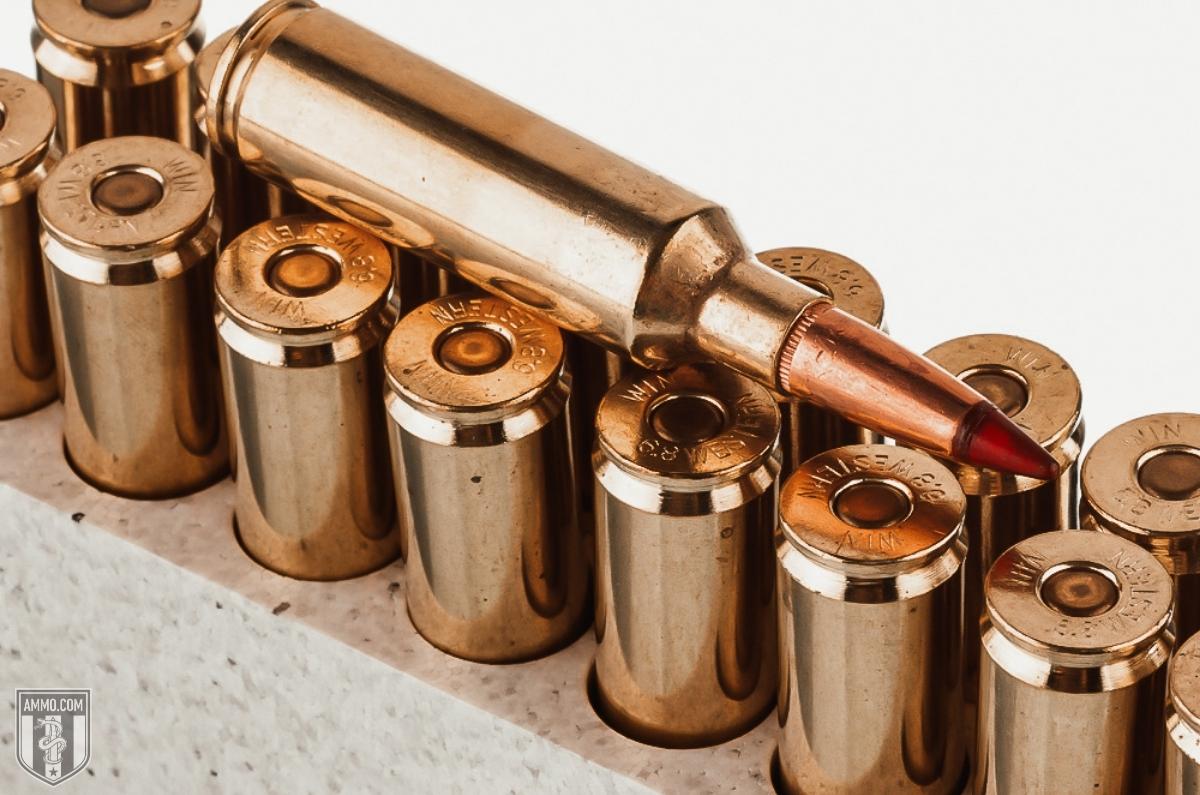
The long-range capabilities of each caliber give hunters the ability to take longer ethical shots.
While I don't see either of these calibers overtaking the .270 Winchester for whitetail deer hunting.
These calibers are a better choice for long-range hunting like elk hunting and pronghorn hunting which often require shots over 200 yards.
But which one is best?
If the recoil of the 6.8 Western doesn't bother you, I would recommend it.
However, if you're more sensitive to recoil, I would recommend the 6.5 PRC because you'll be less likely to jerk the trigger while hunting, which will result in better shot placement.
Plus, you're not giving up much knockdown power.
If you plan on big game hunting for moose, the 6.8 Western will be the better option because of the availability of heavier bullets.
In my opinion, the winner is the 6.8 Western hunting cartridge because you can hunt a wider variety of animals with it.
Home Defense
I don't recommend using either caliber for self-defense or home defense because of overpenetration.
In the terrible circumstance that someone enters my home to harm my family, I won't be reaching for one of my hunting rifles.
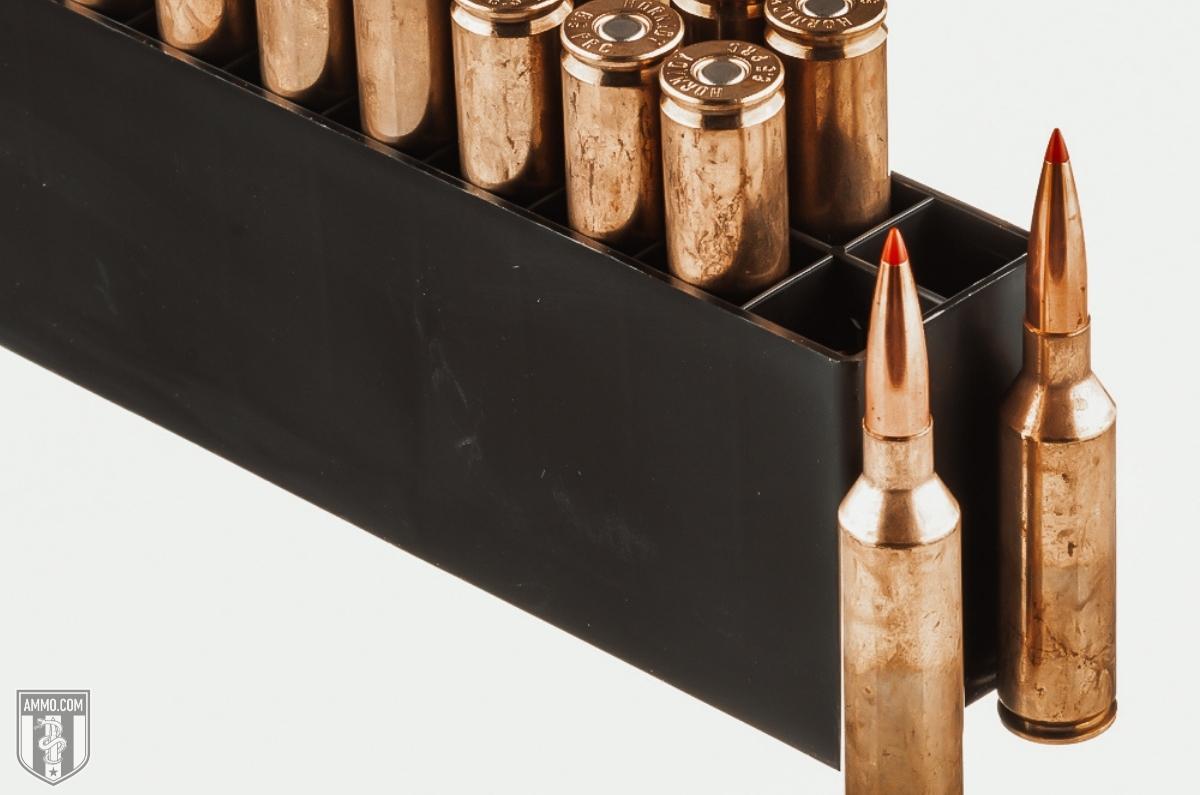
If you only have a rifle chambered in one of these calibers available to you to defend yourself, then, by all means, use it! However, there are much better options.
I prefer a 12 gauge or 20 gauge with 00 Buck for home defense because it's less likely to penetrate walls and hurt your family or neighbors as a rifle round can.
Pistol calibers like a 9mm or 380 Auto are less likely to penetrate multiple walls and, therefore, less likely to harm an innocent bystander.
The 6.5 PRC and the 6.8 Western are not suitable home defense calibers because they're chambered in bolt action hunting rifles, so this section is a tie.
Ammo Cost & Availability
The main problem with new rounds is the availability of ammo. Since, they're not as popular as a 6.5 Creedmoor or 30-30, not as many ammo manufacturers make ammo in these calibers.
However, I suspect that to change as the popularity of each round continues to increase.
As of this writing, Winchester and Browning are the only ammo companies that make 6.8 Western.
This also drives up the price. You're likely to pay over $3.00 per 6.8 Western round.

Since the 6.5 PRC is a few years older, more ammo is on the market. Ammo makers like Hornady, Winchester, Nosler, and Norma all make various grades of 6.5 PRC.
Once again, the 6.5 PRC has a slight edge. I suspect this edge will dwindle as more hunters use the 6.8 Western.
Rifle Cost & Availability
6.5 PRC rifles are not unreasonably priced. They're actually much cheaper than I expected since this rifle cartridge was recently introduced.
A Savage 110 Apex Hunter will cost less than $600 before tax. A Browning X-Bolt short-action rifle will cost just under $1,200, while a Howa Carbon Striker will cost just over $1,000.
Of course, if you're planning on using this caliber for long-range competitions, you're going to spend much more than what these hunting rifles cost, but plenty of rifles are available.
6.8 Western rifles like the Winchester XPR cost as little as $600, or the Browning X-Bolt can go for as much as $2,500 for a factory rifle.
As the interest in the 6.8 Western caliber increases, more manufacturers will begin making rifles chambered in 6.8 Western.
For now, though, the 6.5 PRC has the upper hand in this section.
Reloading

Reloading is one of the best ways to save money on factory ammo.
It also gives you the ability to control the controllable variables, which means you can craft the perfect round for your gun.
Both calibers are reloadable. Meaning reloading equipment, such as the reloading dies, ammo components, and handloading information, are available to the public.
The 6.8 Western has a few projectiles to choose from, like the 165-grain Nosler AccuBond Long Range, 150-grain Sierra GameKing spitzer boattail, or 136-grain Federal Terminal Ascent.
Reloading the 6.5 PRC is just as easy as handloading the 6.8 Western, so this category is a tie.
6.5 PRC Ballistics vs. 6.8 Western Ballistics
The 6.8 Western ballistics and the 6.5 PRC ballistics are similar enough that the average shooter won't notice much difference.
The ballistics will vary depending on several factors, including bullet weight, shape, and barrel length.
The ammo box will list general ballistics for the caliber.
6.8 Western History
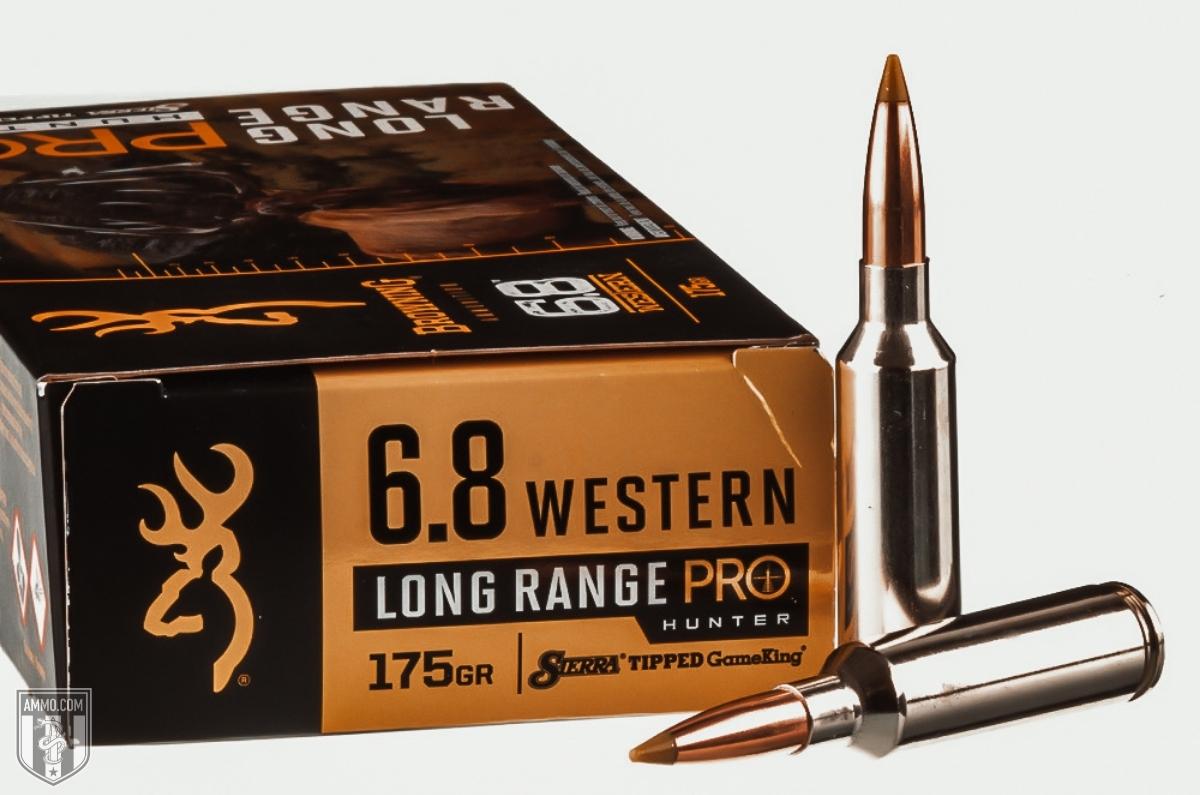
The 6.8 Western traces its history to the .270 Winchester, the parent cartridge for the .270 Winchester Short Magnum (WSM) released in 2002.
The .270 WSM fell short in a few key areas, primarily the lack of twist rate in the rifle barrels, so Winchester and Browning set out to improve it with a new cartridge that could handle a faster twist.
They accomplished that with the 6.8 Western and released it in 2021. They initially received a lot of criticism for introducing a new caliber instead of increasing the production of their other calibers.
However, that criticism has waned, and the popularity of 6.8 Western caliber bullets is beginning to take off amongst long-range shooters and hunters.
6.5 PRC History
Introduced at Shot Show in 2018, the 6.5 Precision Rifle Cartridge was based on the .300 Ruger Compact Magnum.
The 6.5 PRC is designed for short-action rifles but maintains incredible performance.
Like the 6.8 Western, the 6.5 PRC is still growing in popularity and has not fully established itself amongst other calibers.
However, it is making a name for itself.
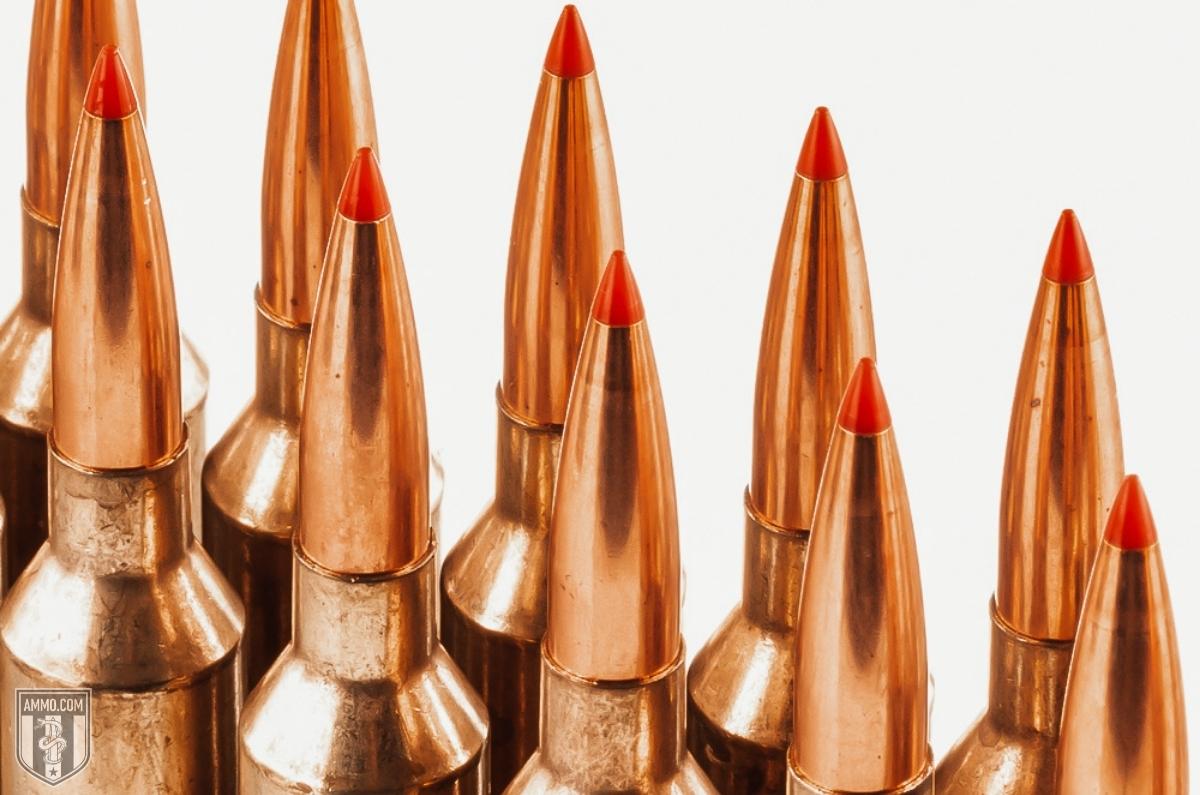
Parting Shots
When comparing the 6.8 Western vs 6.5 PRC, it comes down to nitpicking the details to determine a winner.
The 6.5 PRC won most of the categories, but only by a narrow margin.
The most significant difference between these calibers is recoil.
If you prefer a lighter recoil, then the 6.5 PRC is the cartridge you should use.
However, if you hunt big game like moose, you should go with the 6.8 Western.
Ammo Comparisons
- .308 vs 5.56
- 6.5 Creedmoor vs .308
- .300 Blackout vs .308
- .300 Win Mag vs .308
- .243 vs .308
- .308 vs .30-06
- 7mm-08 vs .308
- .270 vs .308
- 7.62x39 vs .308
- .223 vs .308
- .338 Lapua vs .308
- .380 ACP vs 9mm
- .223 vs 5.56
- .300 Blackout vs 5.56
- 9mm vs 45 ACP
- 9mm vs 40 S&W
- .357 SIG vs 9mm
- 10mm vs 9mm
- 9mm vs 9mm Luger
- .243 vs .270
- .300 Win Mag vs .30-06
- .270 vs .30-06
- .40 vs .45
- 38 Special vs 357
- 9mm vs 40 vs 45
- 5.56 vs 7.62x39
- 338 Lapua vs .30-06
- .30-30 vs .30-06
- 300 PRC vs 338 Lapua
- .30-06 vs 7mm
- 300 Win Mag vs 338 Lapua
- 300 PRC vs 300 Win Mag
- 300 WSM vs 300 Win Mag
- 338 Win Mag vs 338 Lapua
- 12 Gauge vs 20 Gauge
- 10mm vs 357 Mag
- .30-30 vs 7.62x39
- 224 Valkyrie vs 22-250
- 17 HMR vs 22 Mag
- 7.62x39 vs .300 Blackout
- 45 ACP vs 45 Auto
- 45-70 vs 30-30
- 300 Blackout vs 223
- 357 Magnum vs 9mm
- 350 Legend vs 300 Blackout
- 224 Valkyrie vs 223
- 45 ACP vs 38 Super
- 6.5 Grendel vs .308
- 17 HMR vs 22 LR
- 10 Gauge vs 12 Gauge
- 22-250 vs 223
- 45 Colt vs 45 ACP
- 350 Legend vs 30-30
- 5.7x28 vs 223
- 5.7 vs 9mm
- 5.56 vs 5.7
- 22 vs 9mm
- Buckshot vs Birdshot
- 450 Bushmaster vs 308
- 450 Bushmaster vs 223
- Buckshot vs Slug
- 6.5 Grendel vs 5.56 vs 223
- 6mm ARC vs 6.5 Grendel
- 44 vs 45
- 458 SOCOM vs 5.56
- 357 vs 44
- 32 ACP vs 380
- 300 Win Mag vs 338 Win Mag vs 338 Lapua Mag
- 450 Bushmaster vs 458 SOCOM vs 50 Beowulf
- 6mm Creedmoor vs 6.5 Creedmoor
- TMJ vs FMJ
- 44 Special Vs 44 Magnum
- 45 90 vs 45 70
- 6.8 Western vs 6.8 SPC
- 50 Beowulf vs 50 BMG
- 26 Nosler vs 6.5 PRC
- 28 Gauge vs 410
- 6.8 SPC vs 5.56
- 6.8 SPC vs 6.5 Grendel
- 6.8 Western vs 7mm Rem Mag vs .28 Nosler
- 6.8 Western vs 6.5 Creedmoor
- 22 Hornet vs 223
- 6.8 Western vs 6.5 PRC
- .410 vs 12 Gauge
- .410 vs 20 Gauge
- 22 LR vs 22 Mag
- 6mm ARC vs 243
- 7mm-08 vs 270
- 243 vs 6.5 Creedmoor
- Nickel vs Brass Casing
- 204 Ruger vs 223
- 50 Beowulf vs 5.56
- 260 Remington vs 6.5 Creedmoor
- 6mm Remington vs 243
- 28 Nosler vs 300 PRC
- 50 Beowulf vs 50 AE
- 22 Nosler vs 22-250
- 450 Marlin vs 45-70
- 300 Win Mag vs 300 Norma
- 458 SOCOM vs 300 Blackout
- 38-55 vs 45-70
- 22 Hornet vs 22 LR
- 300 Norma vs 338 Lapua
- 338 Lapua vs 50 BMG
- 28 Nosler vs 300 Win Mag
- 28 Nosler vs 6.5 Creedmoor
- 204 vs 22-250
- 458 SOCOM vs 45 70
- 44 40 vs 45 70
- 6.8 SPC vs 6.5 Creedmoor
- 450 Bushmaster vs 30-06
- 7mm Rem Mag vs 300 Win Mag
- 30 Carbine vs 223
- 25-06 vs 30-06
- 26 Nosler vs 28 Nosler
- 16ga vs 12ga
- 30 06 vs 7.62 x54R
- 9mm Makarov vs 9mm Luger
- 350 Legend vs 223
- 30 Carbine vs 5.56
- 6.5x55 vs 6.5 Creedmoor
- 6.5 Creedmoor vs 270 vs 25-06
- M193 vs M855
- 450 Bushmaster vs 458 SOCOM
- 6.5 Grendel vs 6.5 Creedmoor
- 350 Legend vs 5.56
- .277 Fury vs 6.8 SPC
- 277 Fury vs 300 Win Mag
- 10mm vs .45 ACP
- 277 Fury vs 223
- 6.8 SPC vs 300 Blackout
- 6.5 PRC vs 6.5 Creedmoor
- 277 Fury vs 308
- 277 Fury vs 6.5 Creedmoor
- 350 Legend vs 450 Bushmaster
- 277 Fury Vs 5.56 NATO
- 10mm vs 40S&W
- 32 ACP vs 9mm
- 32 Special vs 9mm
- 8.6 Blackout vs 300 Blackout
- 30 Super Carry vs. 9mm
- 5.56 vs 9mm
- .50 Action Express vs 9mm
- 7.62x25 vs. 9mm
- 10mm vs 44 Magnum
- 300 Blackout vs 300 Win Mag
- 6.5 Grendel vs 300 Blackout
- 460 Rowland vs 10mm
- 300 RUM vs 300 PRC
- 300 Norma vs 300 PRC
- 45 GAP vs 45 ACP
- 7mm PRC vs 300 Win Mag
- 300 PRC vs 6.5 Creedmoor
